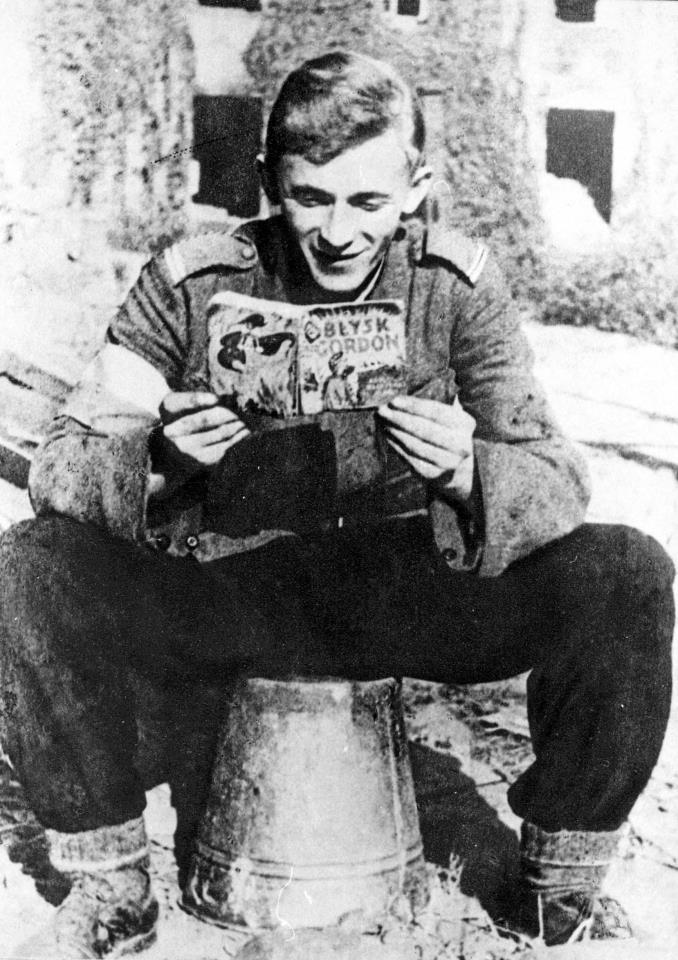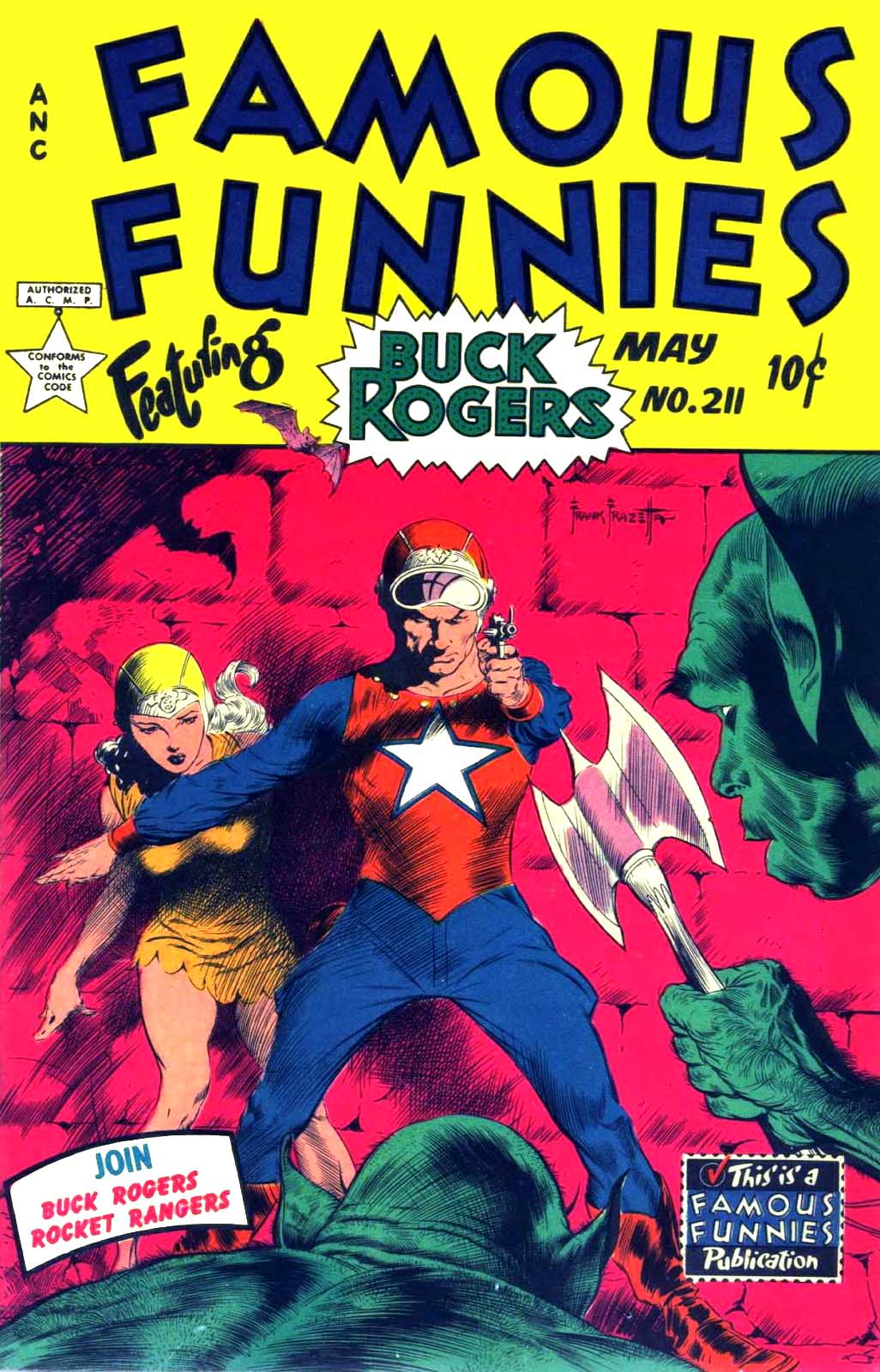|
The Sunday Funnies
''The Sunday Funnies'' is a publication reprinting vintage Sunday comic strips at a large size (16"x22") in color. The format is similar to that traditionally used by newspapers to publish color comics, yet instead of newsprint, it is printed on a quality, non-glossy, 60 pound offset stock for clarity and longevity. Featured are classic American comic strips from the late 19th century to the 1930s. The publication's title is taken from the generic label ("Sunday funnies") often used for the color comics sections of Sunday newspapers. Publisher It was launched December 2011 by editor-publisher Russ Cochran, who was associated with the classic comics reprints of Another Rainbow Publishing, Gladstone Publishing and Gemstone Publishing. Cochran stated, "These are full-size, full-page comics from the greatest years of newspaper comics. Initial print runs will be very small and early issues are likely to sell out." The source of the strips is the Billy Ireland Cartoon Library & Museum ... [...More Info...] [...Related Items...] OR: [Wikipedia] [Google] [Baidu] |
Russ Cochran (publisher)
Russ Cochran (; July 3, 1937 – February 23, 2020) was a publisher of EC Comics reprints, Disney comics, and books on Hopalong Cassidy, Chet Atkins, Les Paul, and vacuum tubes. He was a publisher for over 30 years, after quitting his job as a physics professor. His EC Comics reprints included the black-and-white '' The Complete EC Library'', the four-color '' EC Annuals'', and the full-color hardcover EC Archives. In 1982, he was awarded an Inkpot Award. Cochran was associated with Another Rainbow Publishing, Gladstone Publishing, and Gemstone Publishing. EC Comics reprints Cochran's reprints (which have been released through a number of publishers, including Cochran himself) were compiled primarily from copies of the original artwork pages (complemented when necessary by scans of the original printed comics), which were owned by EC Publisher William Gaines. Cochran befriended Gaines and also handled the resale of the original artwork to collectors via mail-auction catalogs duri ... [...More Info...] [...Related Items...] OR: [Wikipedia] [Google] [Baidu] |
Alley Oop
''Alley Oop'' is a syndicated comic strip created December 5, 1932, by American cartoonist V. T. Hamlin, who wrote and drew the strip through four decades for Newspaper Enterprise Association. Hamlin introduced a cast of colorful characters and his storylines entertained with a combination of adventure, fantasy, and humor. Alley Oop, the strip's title character, is a sturdy citizen in the prehistoric kingdom of Moo. He rides his pet dinosaur Dinny, carries a stone axe, and wears only a fur loincloth. Alley Oop's name was most likely derived from the French phrase ''allez, hop!'' In the 1933 press release that accompanied the launching of the strip with its new distributor NEA, Hamlin was quoted as saying "I really can't recall just how I struck upon the name 'Alley Oop', although it might be from the fact that the name is a French term used by tumblers. Alley Oop really is a roughhouse tumbler." The name of Alley's girlfriend, Ooola, was a play on a different French phrase, '' ... [...More Info...] [...Related Items...] OR: [Wikipedia] [Google] [Baidu] |
Billy Ireland
William Addison Ireland (1880 – May 29, 1935), a native of Chillicothe, Ohio, was a self-taught cartoonist well known throughout Ohio. The Billy Ireland Cartoon Library & Museum was named in his honor in 2009. Career Shortly after his 1898 high school graduation, Ireland was hired by ''The Columbus Dispatch'' in Columbus, Ohio. Ireland worked his entire life for the ''Dispatch'', drawing four to seven editorial cartoons each week in addition to his weekly feature, ''The Passing Show''. Ireland was best known for ''The Passing Show'', which debuted on February 9, 1908, with its title inspired by George Lederer's ''The Passing Show'' (1894), the first successful American revue-format entertainment. In Ireland's full-page color Sunday strip, he commented on everything from local politics and visiting celebrities to the trials and tribulations of the Ohio State University football team. For the September 30, 1923 ''Passing Show'' page, Ireland created a character inspired by Ohio ... [...More Info...] [...Related Items...] OR: [Wikipedia] [Google] [Baidu] |
Flash Gordon
Flash Gordon is the protagonist of a space adventure comic strip created and originally drawn by Alex Raymond. First published January 7, 1934, the strip was inspired by, and created to compete with, the already established ''Buck Rogers'' adventure strip. Creation The ''Buck Rogers'' comic strip had been commercially very successful, spawning novelizations and children's toys, and King Features Syndicate decided to create its own science fiction comic strip to compete with it. At first, King Features tried to purchase the rights to the ''John Carter of Mars'' stories by Edgar Rice Burroughs. However, the syndicate was unable to reach an agreement with Burroughs. King Features then turned to Alex Raymond, one of their staff artists, to create the story. One source for Flash Gordon was the Philip Wylie novel ''When Worlds Collide'' (1933). The themes of an approaching planet threatening the Earth, and an athletic hero, his girlfriend, and a scientist traveling to the new planet ... [...More Info...] [...Related Items...] OR: [Wikipedia] [Google] [Baidu] |
Connie (comic Strip)
''Connie'' is an American adventure comic strip created by the cartoonist Frank Godwin, who introduced a book illustration style to the comics page. The strip ran from 1927 to 1941 for the Ledger Syndicate. ''Connie'' debuted as a Sunday page on November 13, 1927. The strip was syndicated in France as ''Cora'' in the weekly paper ''Le Journal de Mickey''. Some sources indicate 1929 as the start date for ''Connie''. Similarly, Maurice Horn's ''World Encyclopedia of Comics'' says that the strip lasted until 1944, but Allan Holtz's ''American Newspaper Comics: An Encyclopedic Reference Guide'' says that it "was probably just available in reprints that long." Characters and story The strip evolved as Connie Kurridge went through various situations and occupations, including aviator, stunt pilot, charity worker, reporter and detective. Villains were fooled by her beauty and underestimated her agility and resourcefulness. Comics historian Don Markstein commented: :When Connie's daily s ... [...More Info...] [...Related Items...] OR: [Wikipedia] [Google] [Baidu] |
Frank Godwin
Francis Godwin (October 20, 1889 – August 5, 1959) was an American illustrator and comic strip artist, notable for his strip ''Connie'' and his book illustrations for ''Treasure Island'', ''Kidnapped'', ''Robinson Crusoe'', ''Robin Hood'' and '' King Arthur''. He also was a prolific editorial and advertising illustrator. Biography Born in Washington, D.C., Godwin was the son of Harry Godwin, ''The Washington Star'''s city editor, and in 1905, at age 16, he began as an apprentice on his father's paper. Studying in New York at the Art Students League, Godwin became friends with James Montgomery Flagg and two shared a studio together. Godwin was influenced by Flagg and Charles Dana Gibson, and reflections of both can be seen in Godwin's work. Illustration historian and critic Jim Vadeboncoeur gave Godwin the highest ranking: :While obviously influenced by Flagg (and Charles Dana Gibson), Godwin managed to create a style that was recognizably his and that stood out from both ... [...More Info...] [...Related Items...] OR: [Wikipedia] [Google] [Baidu] |
Buck Rogers
Buck Rogers is a science fiction adventure hero and feature comic strip created by Philip Francis Nowlan first appearing in daily US newspapers on January 7, 1929, and subsequently appearing in Sunday newspapers, international newspapers, books and multiple media with adaptations including radio in 1932, Buck Rogers (serial), a serial film, Buck Rogers in the 25th Century (TV series), a television series, and other formats. The ''Buck Rogers'' strip, published 1929–1967 and syndicated by John F. Dille Co. (later called the National Newspaper Syndicate), was popular enough to inspire other newspaper syndicates to launch their own science fiction strips.Ron Goulart, "The 30s -- Boomtime for SF Heroes". ''Starlog'', January 1981 (pp. 31–35). The most famous of these imitators was ''Flash Gordon'' (King Features Syndicate, 1934–2003); others included ''Brick Bradford'' (Central Press Association, 1933–1987), ''Carl Pfeufer, Don Dixon and the Hidden Empire'' (Watkins Syndicate ... [...More Info...] [...Related Items...] OR: [Wikipedia] [Google] [Baidu] |
Frank King (cartoonist)
Frank Oscar King (April 9, 1883 – June 24, 1969) was an American cartoonist best known for his comic strip ''Gasoline Alley''. In addition to innovations with color and page design, King introduced real-time Continuity (fiction), continuity in comic strips by showing his characters aging over generations. Born in Cashton, Wisconsin, King was the older of the two sons of mechanic John J. King and his wife Caroline. When Frank was four years old, he moved with his parents to 1710 Superior Avenue in Tomah, Wisconsin, where they operated their family general store. He started drawing while growing up in Tomah, where he graduated from Tomah High School in 1901. He entered country fair drawing competitions; a sign he drew for a hotel bootblack earned him only 25 cents, but it was seen by a traveling salesman who learned it had been drawn by the son of one of his customers. The salesman arranged an interview for King with a Minneapolis newspaper editor. King began earning $7 a week ... [...More Info...] [...Related Items...] OR: [Wikipedia] [Google] [Baidu] |
.jpg)

